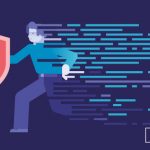
Data Loss Prevention (DLP) has evolved from a luxury to a necessity. It’s a robust measure to prevent unauthorized access, data breaches, and data leakage of sensitive information. But with numerous DLP solutions and policies out there, where do organizations begin?
The National Institute of Standards and Technology (NIST), recognized globally for its role in setting stringent standards and best practices, offers guidelines that have become the cornerstone of data security for organizations big and small. Understanding and aligning with NIST’s guidelines for DLP not only shields businesses from potential threats but also ensures compliance with a host of other regulations. Tools like Endpoint Protector by CoSoSys can be invaluable in ensuring that these guidelines are met with precision. In this guide, we’ll dive deep into the world of NIST DLP, exploring its controls, comparing its various standards, offering a roadmap for successful implementation, and how Endpoint Protector can help meet these guidelines.
What is NIST Data Loss Prevention?
DLP encompasses strategies and solutions that prevent unauthorized users from sending sensitive data outside of the corporate network. Whether it’s intentional maliciousness, accidental mistakes by employees, or vulnerabilities in the system, DLP seeks to safeguard against them all. But as we well know, not all DLP solutions are equal. And that’s where NIST steps in.
NIST, a branch of the U.S. Department of Commerce, plays a pivotal role in shaping the cybersecurity landscape. NIST doesn’t just provide guidelines; it offers a blueprint, a well-defined structure that organizations can rely upon. When we talk about NIST DLP, we’re referring to a subset of NIST’s broader cybersecurity guidelines, specifically tailored for the protection of sensitive data.
Understanding NIST’s take on DLP is crucial for several reasons:
- Relevance: NIST’s guidelines are in sync with the latest threats and vulnerabilities, ensuring that your DLP measures are contemporary and robust.
- Comprehensive Coverage: From ‘data in motion‘ (transferring data) to ‘data at rest‘ (stored data), NIST covers the spectrum, leaving no stone unturned.
- Compliance: With an increasing emphasis on global data protection regulations, adhering to NIST’s DLP standards ensures that organizations are always on the right side of the law.
- Endpoint Protection: Given that data breaches often originate from endpoints – be it desktops or mobile devices – NIST’s emphasis on endpoint security reinforces the DLP framework, making it holistic.
NIST Data Loss Prevention Controls
Implementing NIST DLP controls is similar to building a secure fortress around your organization’s sensitive data. However, to successfully construct this fortress, one must be equipped with the right knowledge and tools. Let’s embark on a step-by-step tutorial to understand and implement NIST’s DLP controls effectively.
1. Grasp the Basics: Data Classification
- Objective: Understand the types of data within your organization and categorize them based on sensitivity levels.
- Steps:
- Identify and list all types of data – PII, intellectual property, healthcare information, and more.
- Categorize data into levels such as public, confidential, and restricted.
- Use DLP tools to tag and classify data, ensuring that protection measures align with their sensitivity.
2. Define and Set Security Policies
- Objective: Create clear and concise security policies governing data access and transmission.
- Steps:
- Determine who has access to which categories of data.
- Set permissions based on roles within the organization.
- Establish rules for transmitting sensitive data, both within and outside the organization.
- Regularly review and update these policies to stay ahead of evolving threats.
3. Ensure Access Control
- Objective: Ensure that only authorized personnel have access to sensitive data.
- Steps:
- Employ user authentication methods like multi-factor authentication (MFA).
- Set up role-based access controls to determine data access based on job functions.
- Monitor and log all access attempts to sensitive data.
4. Real-time Monitoring and Notifications
- Objective: Continuously monitor data flows and receive immediate alerts for any suspicious activities.
- Steps:
- Implement DLP solutions that offer real-time monitoring.
- Set up notification systems to alert relevant personnel when unauthorized access or data transmission is detected.
- Regularly review logs to identify patterns and potential vulnerabilities.
5. Remediation and Response
- Objective: In the event of a potential data leak or breach, have clear procedures in place to address and rectify the situation.
- Steps:
- Identify the source and nature of the breach.
- Contain the breach to prevent further data loss.
- Notify stakeholders and, if required, authorities about the breach.
- Evaluate the breach’s cause and implement measures to prevent its recurrence.
Comparing NIST Standards: 800-53 vs. 800-171
NIST has a vast repository of guidelines and standards aimed at bolstering the cybersecurity posture of organizations. Two of the most referenced when it comes to DLP are NIST 800-53 and NIST 800-171. At first glance, they might seem similar, but there are critical distinctions between them. Let’s dissect these standards to understand their purpose, audience, and how they relate to DLP.
1. NIST 800-53: Security and Privacy Controls
- Purpose: This standard is designed to provide a catalog of security controls for all U.S. federal information systems, except those related to national security. It encompasses a comprehensive list of measures that organizations can adopt to protect their information systems.
- Audience: All federal agencies and their contractors are required to be compliant with NIST 800-53.
- Relation to DLP: The controls in NIST 800-53 have a dedicated section for data protection and DLP. They provide a blueprint for organizations to protect their data at rest, in transit, and during processing.
2. NIST 800-171: Protecting Controlled Unclassified Information in Non-Federal Systems
- Purpose: Unlike NIST 800-53 which targets federal systems, NIST 800-171 is geared towards non-federal entities that handle controlled unclassified information (CUI). The standard outlines requirements to ensure that sensitive unclassified information remains confidential and protected when outside federal systems.
- Audience: All non-federal organizations that access, handle, or process CUI must be compliant with NIST 800-171. This includes contractors, subcontractors, and other non-government entities.
- Relation to DLP: NIST 800-171 outlines specific controls and requirements for data protection, emphasizing the need for robust DLP solutions and practices for organizations working with CUI.
Distinguishing Aspects:
- Scope: While NIST 800-53 is broad and comprehensive, designed for federal information systems, NIST 800-171 is specific to protecting CUI in non-federal systems.
- Depth: NIST 800-53 delves deeper into specific security controls, making it more extensive. In contrast, NIST 800-171 provides a concise set of controls tailored for a specific type of data.
- Implementation: While both standards emphasize data protection, NIST 800-53 provides a more exhaustive list of controls, which might require a more intricate implementation process compared to NIST 800-171.
While NIST 800-53 and NIST 800-171 serve different audiences and have varied scopes, they converge on a singular goal: ensuring robust data security. Whether you’re governed by one standard or the other, the essence remains: data, especially sensitive information, must be safeguarded against breaches, leaks, and unauthorized access. Aligning with these standards not only ensures compliance but also fortifies an organization’s defense against ever-evolving cyber threats.
Best Practices for Implementing NIST Data Loss Prevention
While understanding and employing NIST guidelines is pivotal, integrating them effectively into your organization necessitates a blend of knowledge, strategy, and best practices. Here’s a compilation of best practices to streamline your NIST DLP journey:
1. Continuous Education and Training:
- Why: Even the best security policies can falter if not complemented by well-informed and vigilant staff.
- Practice: Regularly organize training sessions and workshops focused on data security, NIST guidelines, and potential threats. Ensure that both technical and business roles are equipped with the knowledge they need.
2. Layered Security Approach:
- Why: Cyber threats are multifaceted. A single defense mechanism isn’t enough.
- Practice: Combine multiple security measures like firewalls, intrusion detection systems, and DLP tools. This layered approach ensures that even if one layer is compromised, others can hold the fort.
3. Regular Audits and Risk Assessment:
- Why: Threat landscapes evolve, and so should your security measures.
- Practice: Periodically assess your security infrastructure for vulnerabilities. Implement tools, such as Endpoint Protector, that provide real-time threat analysis and feedback.
4. Streamlined Incident Response Plan:
- Why: A quick and effective response to a breach can mitigate potential damages.
- Practice: Have a clear-cut, well-documented incident response strategy. Ensure that roles are designated, and everyone knows the protocol to follow in the event of a security incident.
5. Data Minimization:
- Why: The less sensitive data you hold, the lesser the risk.
- Practice: Regularly review the data you store and process. If certain data is no longer needed or relevant, consider purging it securely.
6. Embrace Endpoint Security:
- Why: With the rise of remote working and BYOD (Bring Your Own Device), endpoints have become potential vulnerabilities.
- Practice: Implement robust DLP policies tailored to your organization’s needs. Ensure that every device accessing the network adheres to security policies, is regularly updated, and has necessary protections in place.
7. Keep Up with Regulatory Changes:
- Why: Compliance isn’t static. Regulations like NIST get updated to address new challenges.
- Practice: Stay updated with the latest changes in the NIST guidelines and other relevant regulations. Adjust your security policies and mechanisms accordingly.
8. Foster a Culture of Security:
- Why: Security isn’t just a technical challenge; it’s a cultural one.
- Practice: Encourage a culture where every employee understands the value of data and the importance of security. Make security an integral part of your organizational ethos.
Incorporating these best practices doesn’t just align your organization with NIST’s DLP standards; it significantly elevates your cybersecurity stature. Remember, in the realm of data security, proactive preparedness is the best offense and defense.
Elevating Data Security with NIST DLP Standards
In today’s rapidly digitizing world, where data breaches and cyber threats are on the rise, robust data security policies are not a luxury; they’re a necessity. NIST offers meticulously curated guidelines that act as a beacon for organizations navigating the murky waters of data protection.
Understanding and implementing the NIST DLP standards is a good step forward, but it’s just the beginning. The real value lies in how these standards are integrated into daily operations, ensuring that sensitive data – be it intellectual property, PII, or enterprise data – is shielded from both external hackers and internal threats.
Choosing the right tool for your DLP security is crucial in making the road to NIST compliance smoother. Endpoint Protector, with its intuitive interface and robust feature set, helps in overcome many of the challenges you will face.
Frequently Asked Questions
Download our free ebook on
GDPR compliance
A comprehensive guide for all businesses on how to ensure GDPR compliance and how Endpoint Protector DLP can help in the process.
















